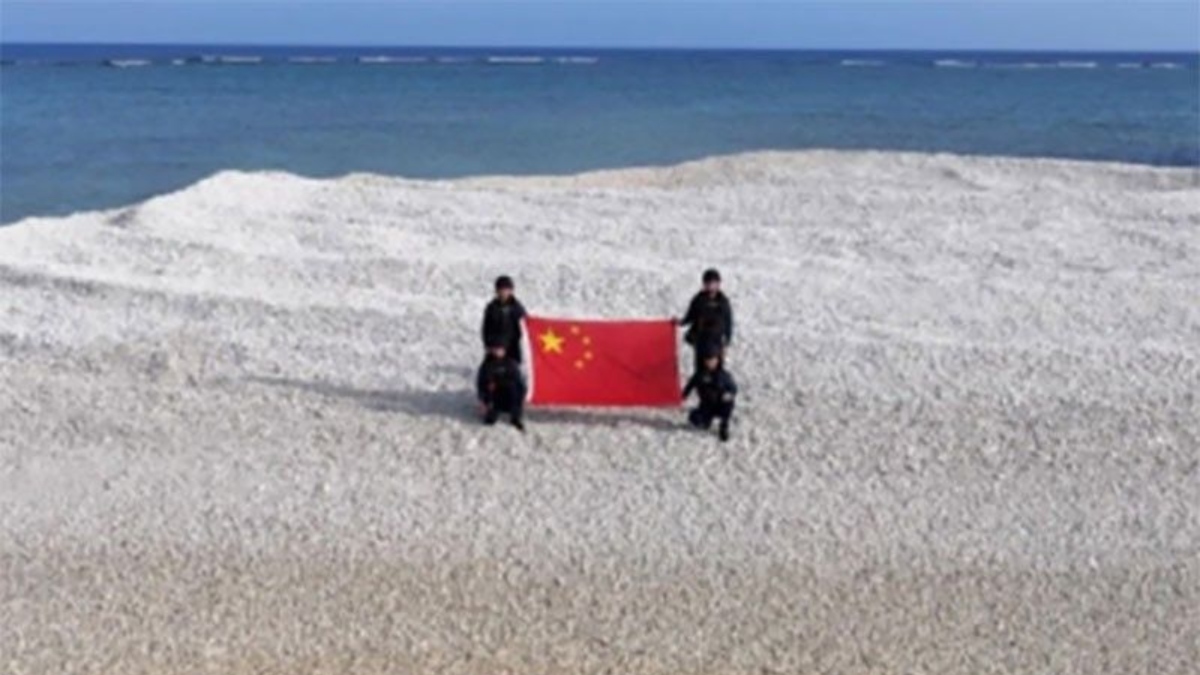Tensions between China and the Philippines flared once again after the Chinese coast guard (CCG) seized control of Sandy Cay, a disputed sandbank near a major Philippine military outpost in the South China Sea, according to Beijing’s state media.
The operation took place on April 26, coinciding with the Philippines’ ongoing Balikatan military exercises with the United States. Chinese state broadcaster CCTV reported that the CCG landed on the reef — which China calls Tiexian Jiao — to “exercise sovereignty and jurisdiction,” inspect the area, and document alleged Philippine activities. Images circulated showing CCG personnel raising a Chinese flag and collecting debris on the tiny reef, situated close to Pag-asa Island where Philippine forces are stationed.
Although China has not built any structures on Sandy Cay, the move prompted alarm in Manila and Washington. A Philippine maritime official, quoted anonymously by the Financial Times, warned that Beijing’s actions could escalate harassment near Pag-asa Island.
The White House described the reports as “deeply concerning if true.” James Hewitt, spokesperson for the National Security Council, emphasized, “Actions like these threaten regional stability and violate international law,” adding that the U.S. is in close consultation with its allies.
China continues to assert sweeping claims over the South China Sea, despite a 2016 international ruling rejecting its position. Meanwhile, Manila has strengthened ties with Washington, with this year’s Balikatan exercises featuring new defense drills, including integrated air and missile defense simulations.
At the opening ceremony, US Marine Corps Lieutenant General James Glynn underscored the long-standing alliance between the two nations, saying, “Nothing builds bonds more quickly than shared adversity.”
Beijing, for its part, slammed the joint exercises, accusing Manila of “collusion” with outside forces and claiming that the drills undermine regional stability.





